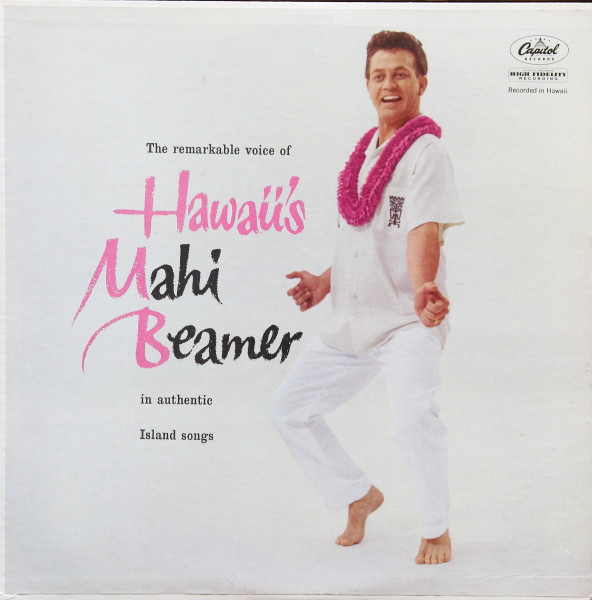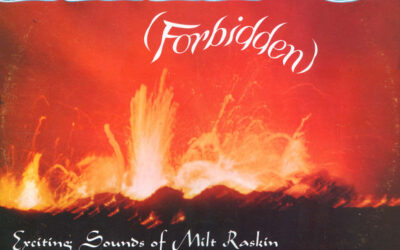Genre: Folk, World, & Country
Style: Hawaiian, Pacific
Year: 1959
Tracklist:
- Opening Chant & Pupu Hinu Hinu (Shiny Shell)
- Na Halo O Naue (The Hala Trees Of Naue)
- Ke Kali Nei Au (Hawaiian Wedding Song)
- Ke Alii Hulu Mamo (Feathered Cloak Of The Chief)
- Lei Ilima
- Kahulu Aku Kahuli Mai
- Kawohikukapulani
- Heeia
- Puamaeole
- Kimo Hula
- Nohili
- Paniau
Notes:
Mahi Beamer’s 1959 album, Hawaii’s Mahi Beamer, stands as a timeless tribute to the rich musical heritage of Hawaii. Released by Capitol Records, this album showcases Beamer’s extraordinary vocal talent, particularly his mastery of the high-register falsetto—a hallmark of traditional Hawaiian music. The album features a collection of authentic island songs, chants, and hulas, many of which were composed by members of the esteemed Desha-Beamer family. Through this work, Mahi Beamer not only celebrated his family’s legacy but also introduced the world to the poetic and soulful essence of Hawaiian music.
The tracklist of Hawaii’s Mahi Beamer includes a variety of compositions that reflect the depth and diversity of Hawaiian musical traditions. Songs like “Ke Kali Nei Au (Hawaiian Wedding Song)” and “Kimo Hula” highlight Beamer’s ability to convey emotion and storytelling through his voice. The album also features compositions by his grandmother, Helen Desha Beamer, such as “Pupu Hinu Hinu” and “Kawohikukapulani,” which add a personal and historical dimension to the collection. The arrangements, enriched with traditional instruments like the ipu gourd and ukulele, create an immersive listening experience that transports audiences to the islands.
One of the defining features of this album is its ability to balance authenticity with accessibility. While deeply rooted in Hawaiian traditions, the music resonates with listeners beyond the islands, thanks to Beamer’s clear and soaring tones and the album’s polished production. The liner notes emphasize the romantic and rhythmic qualities of the songs, inviting mainland audiences to explore the enchanting world of Hawaiian music. This approach helped bridge cultural gaps and brought Hawaiian music to a broader audience during a time when the islands were gaining prominence as the 50th state of the United States.
Hawaii’s Mahi Beamer remains a significant work in the history of Hawaiian music, celebrated for its artistry and cultural importance. It not only solidified Mahi Beamer’s reputation as a gifted vocalist and cultural steward but also served as a gateway for many to discover the beauty of Hawaiian music. The album’s legacy endures as a testament to the power of music to preserve and share cultural heritage, ensuring that the spirit of Hawaii continues to inspire generations.














